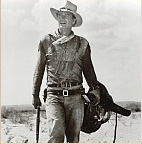
There were many gunfights in the Old West, right? Well, not exactly. The closest thing in history to what the movie industry made us believe was a common occurrence in the gunslinger days, a face-off on Main Street at sundown, was probably the O.K. Corral incident in Tombstone, Arizona, in which Wyatt Earp, his brothers and Doc Holliday got in a shoot-out with the Clanton and McLaury brothers on October 26, 1881. However, even that event did not involve what we would think of today as Fast Draw. Dime novelists, the tabloid writers of the time; western genre authors and Hollywood movie producers actually invented the concept of Fast Draw.
During Bob and Becky Munden’s performances all over the world and on television shows like American Shooter, Shooting USA, Ripley’s Believe it or Not! — and many others, Bob pointed out that gunslingers in the Old West could not draw and shoot their guns quickly because stock, single-action revolvers were not designed to withstand fast cocking, and explained that the holsters of the time were designed to hold the gun securely and protect it from the elements. This meant shooters could not pull a gun out of the holster with any great speed. Also, to become as good with a gun as the heroes supposedly are in western movies, a gunslinger would have had to practice for months and months — and use up tons of ammunition. He would have had to travel with a Conestoga wagon to carry the amount
of ammunition required!
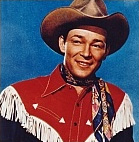
Was it all a myth? No. In the wild days of the Old West people lost their lives at card tables, outside saloons and in dark alleys. They just didn’t face off in the street and offer the other guy a chance to draw first!
In the 1950s, westerns dominated prime-time television. Practicing Fast Draw, sharing this activity with friends, forming clubs and starting competition was irresistible to a generation that cut its teeth on movies featuring stars like Roy Rogers, Gene Autry, Lash LaRue, Hopalong Cassidy, Randolph Scott, John Wayne and others. Today, the idea of quick draw continues to delight fans of movies such as Tombstone, Wyatt Earp, Unforgiven, Pale Rider and Open Range.
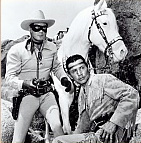
Fast Draw became a professional shooting sport in the 1950s. Clubs sprang up across the country, beginning in Southern California. Club members in the Mid-west tended to shoot wax bullets in tournaments shot indoors. The clubs in the West shot mostly blanks outdoors in an event called, Walk and Draw Level, Man-against man. Man-against-man means two opponents shooting against an electronic timer. The shooter with the fastest timed draw, under one second, wins. Later, the sport evolved to include several different events, some using blanks, others using wax bullets.
In blanks, a paper wad is used to hold black powder in the brass casing. At Bob Munden’s School of the Fast Gun, held every summer in Butte, Montana, from 1993 until Bob’s passing, students learned how to load blanks and wax bullets. At the School of the Fast Gun, they learned how to live out the childhood fantasy of being a gunslinger in the Old West.
In 1953, at age 11 Bob Munden competed in the Southern California desert with a group of men shooting Fast Draw using live ammunition. Bob used a cap-gun holster, tied on with a sash from a bath robe. In his teens, Bob began setting world records that stand to this day.
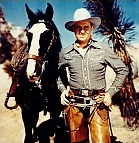
Back in the 1950s, participants shot at balloon targets attached to a tip stick. When the fastest shooter broke his balloon, the stick would tip up, thereby designating the winner. These contests were called pot shoots, because everyone threw a dollar into the pot and the winner took all. At Knott’s Berry Farm in Buena Park, California, a man named Dee Woolem, who worked as one of the bandits pretending to rob train-riding tourists several times a day, practiced Fast Draw in between performances. He and his fellow bandits devised a self-start timer to help decide who was the fastest.
Competitions started up around the area in which shooters used primers instead of live ammunition, and then blanks against the self-start timer that timed a shooter’s draw. Bob Munden’s initial reaction to the idea of Fast-Draw competition with blanks instead of bullets was that it was child’s play, but it wasn’t too long before he changed his mind when he realized that many more locations could host tournaments, and that the sport didn’t have to be restricted to shooting ranges away from town. Also, Bob quickly developed an appreciation of the extreme skill involved in drawing and shooting with truly radical speed.
When self timers arrived on the scene, they eliminated the time lost when someone else operated the timer, sometimes called the clock. Favor and then Chrondek companies made timers for drag racing. For the modern sport of Fast Draw, Chrondek made a Fast-Draw dueling timer, which made it possible to have tournaments that were man-versus-man — including measuring a reaction time! The new technology allowed the sport to progress, and the event Walk and Draw Level was born. Contestants mainly shot outdoors in the parking lots of shopping centers, car dealerships, restaurants, etc. This public access resulted in sponsorships. Sponsoring businesses wanted their parking lots filled with potential customers, and the sport brought them. Fast Draw was, in a word, booming!
Bob started shooting Walk and Draw Level events in 1959. At that time, Curt Blakemore was the one who shot the fastest times. Bob developed his own draw to challenge for Top Gun and soon dominated the sport with his fastest times.

The Mundens left Fast Draw competition in 1975 to concentrate on their shooting exhibitions and because the World Fast Draw Association, of which Bob and Becky were active members in its early years, began allowing the use of Funny Guns and Funny Holsters or Fender Rigs. Bob coined the term Funny Guns to describe guns some competitors used that were lightened with aluminum and titanium parts. The guns would be destroyed if used with a real bullet. They reminded Bob of the Funny Cars used in drag racing, which look like regular cars but are really light-weight rails in disguise. Some shooters also started using outlandish, holsters that stuck far out from their bodies. Some of the rigs even bounced as the shooters walked. To Bob, this was shooting with no honor. Bob and Becky felt allowing Funny Guns and Funny Holsters that only required shooters to tip the gun out of the holster, ruined the sport of Fast-Draw with blanks.
On the live-ammunition side of the sport, Fast-Draw enthusiasts progressed in the 1970s to the world-wide sport of action shooting and formed the International Practical Shooting Confederation, or IPSC, under the able leadership of the late Lt. Col. Jeff Cooper.
“A lot of people don’t know that I considered Jeff my mentor. In fact, when I was a high-school kid, he let me use his Colt single-action revolver to compete in Jeff’s famed Leatherslap tournaments in Big Bear, California.” — Bob Munden
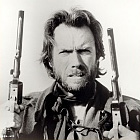
For newer shooting sports like Cowboy Action Shooting and Cowboy Fast Draw, Bob and Becky advocated for rules calling for the use of real equipment and for the creation of separate categories for shooters using smaller calibers, short strokes or light loads, to keep competition fair. Since the mid 1980s, the sports of Cowboy Action Shooting, Cowboy Mounted Shooting (in which shooters ride horses) and Cowboy Fast Draw best represent the legends and lore of America’s Old West. More and more people, from many countries, are becoming involved in these fun and challenging shooting sports in which participants dress the part of characters of the Old West in authentic costumes, and use single-action revolvers, lever-action rifles and double-barreled or early-pump
shotguns.
The spirit of the Old West is alive and well!
